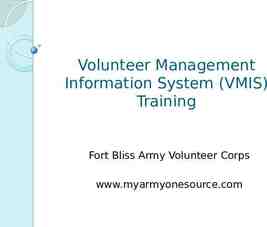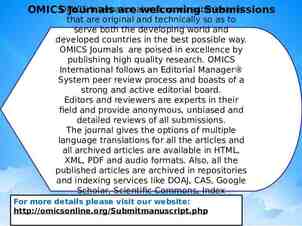LECTURE 4 Sustainability and Transportation — Key Concepts
10 Slides612.51 KB
LECTURE 4 Sustainability and Transportation — Key Concepts
Sustainability Triple bottom line — environmental, economic, and social Principles Preserving and restoring environmental and ecological systems Fostering community health and vitality Promoting economic development and prosperity Ensuring equity among population groups over generations Source: NCHRP Report 708:A Guidebook for Sustainability Performance Measurement for Transportation Agencies. National Academies Press. https://doi.org/10.17226/14598 2
Transportation and Sustainability There are several areas in which transportation impacts sustainability Sustainability principles and considerations can apply to every stage of the transportation life cycle Sustainable transportation reflects how sustainability principles are applied to the transportation sector 3
Transportation and Sustainability (Continued) Energy/climate change Habitat Water quality Hydrologic cycle Air quality Mobility and access Community impacts Non-renewable resources 4
Approaches to Sustainable Transportation May be holistic (viewing transportation as a part of a broader system) or sector specific (focusing on the transportation sector alone) Source: Gudmundsson et al. (2016). Sustainable Transportation: Indicators, Frameworks, and Performance Management. Springer. 5
Transportation Decisions and Sustainability Long-range transportation planning Point at which expectations for sustainability performance can be discussed — particularly in terms of desired sustainability outcomes — and broad performance goals established that drive subsequent investment patterns Short-range transportation programming Point at which broad expectations about sustainability established in long-range planning can be translated into explicit targets associated with implementation of a specific set of projects Project-level planning Project-level sustainability performance may be used to inform project-level planning decisions 6
Transportation Decisions and Sustainability (continued) Project-level review As in planning, project-level sustainability performance may be used to inform projectlevel environmental decisions Design, land acquisition, and permitting Points at which the predictions made during planning and environmental review can be verified and translated into an outcome of sustainability Construction, maintenance, and operations How construction, maintenance, and operations work is done can be designed to support an agency’s sustainability goals 7
Policies and Programs Addressing Sustainability Sustainability considerations overlap with several transportation-sector polices and programs, such as those addressing: Climate change Environment Resilience Connectivity Context-sensitive solutions Neighborhood revitalization Health Smart growth Equity Multimodal transportation These usually cover only some aspects of sustainability, not the triple bottom line in a holistic manner 8
Challenges for Sustainable Transportation Aspect Challenges Potential Solution DEFINITION — conceptualizing and defining sustainable transportation Unclear definition and misuse of the term. Also affected by inherent conflicts between sustainability dimensions, political factors, and alternative discourses such as resilience or climate adaptation. Take a holistic approach — with consensus on fundamental issues MEASUREMENT — assessing progress Primarily affected by the multitude of frameworks and metrics present. It is also affected by the cross-cutting nature of sustainability, which may limit the scope of what is measured. Focus on end goal (i.e., outcome focused) IMPLEMENTATION — implementing programs and policies Political issues and alternative discourses can affect how programs and policies are implemented. Be context specific — consider local factors Source: Adapted from Ramani, T. L., and Zietsman, J. (2016). Sustainable Transportation—Alternative Perspectives and Enduring Challenges. International Journal of Urban Sciences, 20(3), 318-333. 9
LECTURE 4 Sustainability and Transportation — Key Concepts















